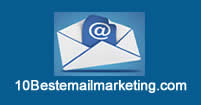Introduction
Email marketing is a powerful tool for businesses to engage with their audience and drive conversions. However, to make the most of your email campaigns, it is crucial to segment your email list effectively. List segmentation allows you to divide your subscribers into smaller, targeted groups, enabling you to deliver more personalized and relevant content. In this article, we will explore the best practices and strategies to optimize list segmentation in email marketing, ultimately leading to better engagement and higher conversion rates.
The Importance of List Segmentation
Segmenting your email list is essential for several reasons. Firstly, it allows you to send targeted emails to specific segments of your audience, tailoring the content to their interests and preferences. By delivering personalized content, you can increase the chances of engagement and conversion.
Additionally, list segmentation helps you avoid email fatigue. When subscribers receive too many irrelevant emails, they may become disengaged or even unsubscribe from your list. However, by segmenting your list, you can ensure that each subscriber receives emails that are specifically relevant to them, avoiding fatigue and ensuring continued engagement.
How to Segment Your Email List Effectively
Segmenting your email list requires careful planning and analysis. Here are some useful tips to help you segment your list effectively:
1. Demographics and Location
One of the simplest and most effective ways to segment your email list is by demographics and location. Understanding your subscribers' age, gender, location, and occupation can provide valuable insights into their preferences and interests. By tailoring your content based on these demographics, you can create more targeted campaigns that resonate with your audience.
2. Engagement Level
The engagement level of your subscribers is another key factor to consider when segmenting your email list. Analyze metrics such as open rates, click-through rates, and purchase history to identify highly engaged subscribers. These individuals are more likely to respond positively to your emails, making them ideal for targeted promotions, exclusive offers, or loyalty programs.
On the other hand, subscribers with low engagement levels may require re-engagement campaigns to regain their interest. By understanding their behavior and preferences, you can tailor your content to re-ignite their engagement and prevent them from becoming inactive.
3. Purchase History and Preferences
Segmenting your list based on subscribers' purchase history and preferences allows you to deliver highly relevant content and offers. By analyzing past purchases or product preferences, you can send targeted recommendations or cross-sell and upsell opportunities based on their specific interests. This personalization can significantly increase engagement and conversion rates.
4. Customer Lifecycle Stage
Considering the various stages of the customer lifecycle is essential for effective list segmentation. Divide your subscribers into groups based on where they are in the customer journey, such as leads, first-time buyers, repeat customers, or loyal advocates. Each stage requires different messaging and offers, so tailoring your content accordingly will drive higher engagement and encourage continued progression along the customer journey.
5. Behavioral Triggers
Behavioral triggers, such as website browsing behavior, abandoned carts, or email click patterns, can provide valuable insights for segmentation. For example, if a subscriber has shown interest in a particular product or category, you can send targeted follow-up emails with relevant offers or content. By combining behavioral triggers with other segmentation criteria, you can create highly personalized and effective campaigns.
Conclusion
Segmenting your email list is a crucial step towards optimizing your email marketing efforts. By dividing your subscribers into smaller, targeted groups based on demographics, engagement levels, purchase history, preferences, customer lifecycle stages, and behavioral triggers, you can deliver personalized and relevant content that resonates with your audience. This, in turn, leads to higher engagement, increased conversion rates, and ultimately, business success.
Remember, email list segmentation should remain an ongoing process. Regularly analyze and update your segments based on new data and insights to ensure your email marketing campaigns remain effective and impactful.
Remember, each subscriber is unique, and by understanding their specific needs and preferences, you can create a more personalized and engaging email experience. So, how will you start segmenting your email list to enhance your email marketing efforts?
